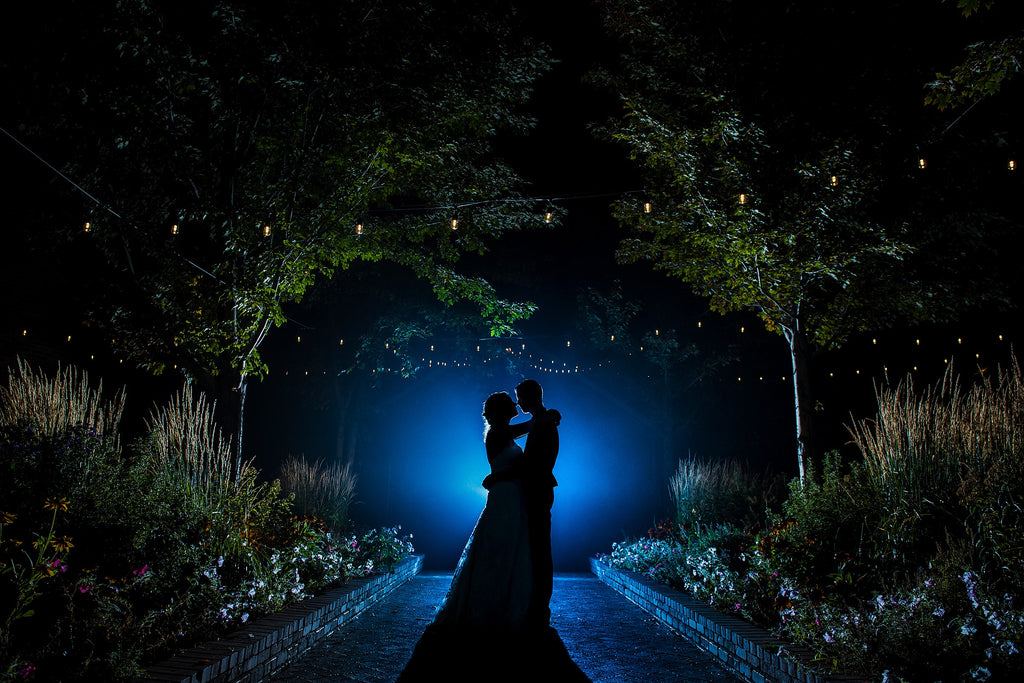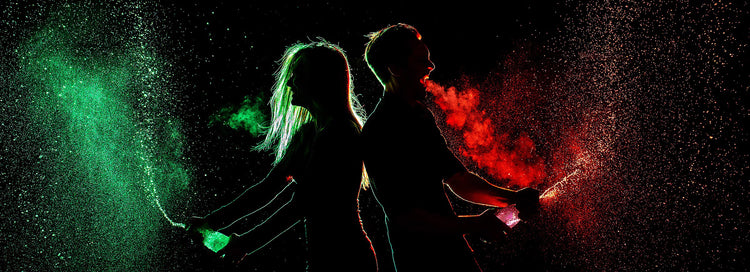During my 13 years as a wedding photographer, I’ve used just about every type of SpeedLight gel known to man. I’ve also constructed my own gels, using Velcro and colored acetate sheets. But everything I tried kind of sucked. They were poorly-made and felt cumbersome to use on a hectic wedding shoot.
That all changed when MagMod emerged onto the scene. I bought into the system a few years ago and gelling has been nothing but a pleasure ever since.
So why do I love MagGels so much?
They are the easiest, most efficient and most versatile system on the market, hands down. You simply insert your gel into the holder, then stick it onto your flash and the magnets do the rest.
Also, the MagGel can hold three different gels simultaneously, so you can create all sorts of cool color combinations. Or you can skip the MagGel holder all together and insert your gels directly into your MagSphere, MagSnoot or MagBeam. I find myself doing this at least once or twice at every wedding because MagMod makes it so quick and easy to combine mods.
But enough lip service. Let’s break down some photos!
Creative Gels

This was shot during a fall-themed wedding in Boulder County. We had planned a confetti portrait for the end of the night, but realized that the confetti we’d purchased was white. In order to spice up the image a bit, we added an Orange Creative Gel to our flash to backlight the falling “leaves,” which also made the photo feel a little more seasonal. The front light was outfitted with a MagSphere + MagGrid combo to light the couple.

We don’t get too many foggy days here in Colorado, but this wedding was one of them! I lit this shot with one light on a stand behind the couple, equipped with a Blue Creative Gel to illuminate the fog and silhouette the couple. I then warmed up the foliage around the edges of the frame in post.

This was our company holiday card photo for 2018. We set up two lights directly behind ourselves, one equipped with a Green Creative Gel pointing toward Moira and one with a Red Creative Gel pointing toward me to backlight the spray. Super quick. Super easy. The hardest part was playing the role of photographer and model simultaneously (Interval Timer Mode to the rescue!)
Color Temperature Orange (CTO) Gels

This was taken on a gray winter afternoon and I knew we had to do something to create more visual interest in the portraits. So I dialed my white balance toward the blue end of the spectrum (around 3,000K), which gave a richer blue color to the winter scene. We then popped a Full CTO Gel on the flash to correct for the white balance shift, which brought the couple back into a realistic color space. The flash was also equipped with a MagSphere + MagGrid combo, with the CTO inserted directly into the MagSphere.

The uplighting in the reception tent was a pale blueish-purple color and I wanted to create a bit more color contrast for some of the dance party shots. To do this, I dialed my white balance to around 4,000K to bring a richer blue color out of the background. We then added a Half CTO gel to our flash to light the subjects, which corrected for the white balance shift and helped provide a bit of contrast between the foreground and background. The flash was also equipped with a MagSphere + MagGrid combo (CTO inserted directly into the MagSphere).

Once I took the “safe shots,” of the father-daughter dance, I walked outside of the dance hall, into a room that was lit with diffused daylight streaming in through the windows. I had already added a Half CTO Gel to my flash to match the warm color temperature of the chandelier above the dance floor. The daylight was much cooler in temperature than the light inside, so I was able to create a bit more visual interest by juxtaposing those two contrasting color temperatures. The flash was also equipped with a MagSphere + MagGrid combo (again, CTO inserted directly into MagSphere).
Color Temperature Blue (CTB) Gels

The couple really wanted a nice sunset photo, but the sky looked kind of lame. I dialed my white balance all the way up to 10,000K to warm up the ambient light. We then threw a Full CTB on our flash, which was positioned directly behind the couple, to correct for the white balance shift. The happy accident here was that the flash kicked off of the groom’s right cheek, which provided a nice fill light on the bride’s face.
Neutral Density (ND) Gel

Due to the high ISO needed to capture the stars, the flash was too bright on the couple, even at 1/128th power. The solution was to toss an 8x ND Gel on the flash, which gave us the leeway we needed to blend the flash with the ambient light. The flash was also outfitted with a MagSphere, and the ND was inserted directly into the MagSphere using the integrated gel slot at the bottom.
So what’s the moral of this story?
There are all sorts of creative uses for gels, but as weddings photographers, we don’t have a ton of time to fuss with our gear on the job. We need a gel set that’s quick and easy to use and versatile enough to combine with other mods. The MagGels are the only product on the market that fits the bill.
Happy gelling!
About the Author
Jesse & Moira LaPlante are based out of Boulder, Colorado, USA and specialize in "non-traditional wedding photography for kick-ass couples." Together the two have inspired many in the MagMod Community to try using their MagMod modifiers in ways they might not have ever imagined. To see and follow more of their work be sure to check out their Instagram feed and website.

